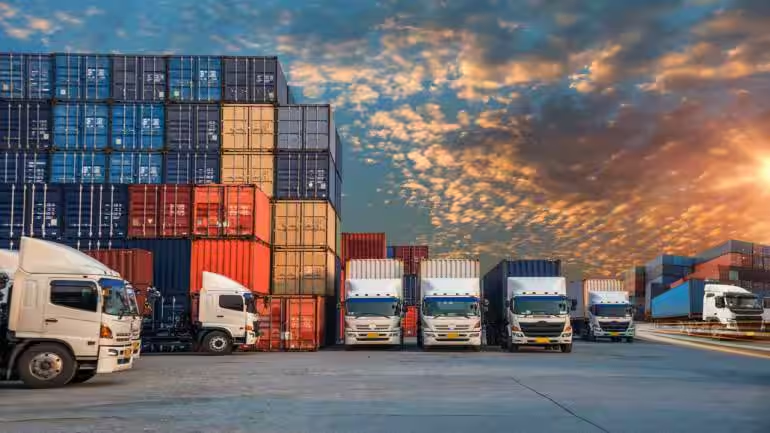Most transport companies focus on the obvious ways to make more money—raising prices, taking on more jobs, adding trucks to the fleet. But here’s what successful operators have figured out: the biggest profit gains often come from getting better at planning what’s already happening. The difference between a well-planned operation and a chaotic one can be worth thousands of dollars every month, and it shows up in places most business owners don’t think to look.
Where Planning Actually Affects the Bottom Line
Planning isn’t just about knowing which truck goes where. It touches almost every part of what makes a transport business profitable or unprofitable. Poor planning means drivers spend more time on the road than necessary, which burns through fuel budgets faster than most people realize. It means vehicles sit idle when they could be working, or worse, they’re moving around empty because nobody coordinated the return loads properly.
The ripple effects go further than fuel and time, though. When planning falls short, customer promises get broken. Delivery windows get missed. The phone starts ringing with “where’s my shipment?” calls that eat up hours of admin time every week. Each of these problems costs money in different ways—some obvious, some hidden in lost opportunities and damaged relationships.
The Real Cost of Winging It
Many transport operations run on what amounts to educated guessing. Someone with experience looks at the jobs for the day, mentally maps out what seems reasonable, and sends trucks on their way. This works okay until it doesn’t. The problem is that human brains aren’t particularly good at optimizing multiple variables at once—factoring in traffic patterns, delivery windows, vehicle capacity, driver hours, and fuel efficiency all while trying to maximize the number of jobs completed.
What this means in practical terms is that most manually planned routes leave money on the table. A truck might drive past three potential pickup points to reach one delivery, then backtrack through the same area later. Or a vehicle rated for two tons carries a single 500-kilogram load because nobody had time to check what else was heading in that direction. These aren’t catastrophic mistakes, but they add up to significant waste over weeks and months.
How Better Tools Change the Math
The transport companies seeing the biggest improvements in profitability aren’t necessarily working harder—they’re working with better information and better systems. Modern planning tools can process all those variables that overwhelm human planners, finding efficiencies that weren’t obvious before. This is where solutions such as the best logistics software come into play, helping businesses optimize routes, coordinate loads, and make smarter decisions about resource allocation.
When planning improves, the benefits show up across the board. Fuel consumption drops because routes make more sense. Drivers complete more jobs in the same amount of time because they’re not doubling back or waiting around. Vehicle utilization goes up because the system can spot opportunities to combine loads or schedule return trips productively. Each of these improvements directly impacts the profit margin on every job.
The Capacity Problem Nobody Talks About
Here’s something interesting: most transport businesses have more capacity than they think they do. The limitation isn’t usually the number of trucks or drivers—it’s how well those resources get used. A fleet running at 60% efficiency with poor planning can often handle 30-40% more volume just by planning better, without adding a single vehicle.
This matters because growth usually comes with a big decision point. When volume increases, the instinct is to buy or lease more trucks, hire more drivers, expand the depot. These decisions come with major fixed costs and financial commitments. But what if the existing fleet could handle that extra volume with better coordination? That’s the difference between spending money to grow and making money from growth.
What Good Planning Actually Looks Like
Effective planning in transport isn’t about perfection—it’s about having accurate information and the ability to adjust quickly. The best operations know where every vehicle is, what capacity they have available, and what jobs are coming up. When something changes (and something always changes), they can reorganize efficiently rather than scrambling to fix problems.
This kind of visibility requires systems that keep everyone on the same page. Drivers need to know their routes and any changes immediately. Dispatchers need real-time updates on progress and delays. Customer service needs accurate information to share with clients. When all of this connects properly, the operation runs smoother and problems get caught early instead of turning into expensive emergencies.
The Profit Margin Reality
Transport is a notoriously tight-margin business. Many jobs make money on paper but lose it in execution because of inefficiencies. A delivery that should take two hours takes four because of poor routing. A truck travels 200 kilometers when 150 would have worked. Admin staff spend hours sorting out confusion that better planning would have prevented.
Each of these inefficiencies chips away at profit margins that were already slim to begin with. The flip side is equally true: improving planning doesn’t just save a bit of money here and there. It can fundamentally change what jobs are worth taking and what growth looks like. A 10% improvement in operational efficiency might only sound modest, but on tight margins it can mean the difference between struggling and thriving.
Making the Switch Without the Chaos
The challenge for many transport businesses is that improving planning means changing how things work, and change during busy operations feels risky. Nobody wants to experiment with new systems when there are deliveries to make and customers to keep happy. But the companies making this transition successfully tend to approach it practically—they start with one part of the operation, prove the value, then expand from there.
The results speak for themselves. Better planning means fewer stressful days, happier drivers who aren’t fighting with impossible schedules, and customers who get reliable service. It means business owners can see what’s actually happening in their operations instead of guessing. Most importantly, it means the hard work of running a transport business translates into better financial outcomes instead of just treading water.
The transport companies pulling ahead aren’t doing anything magical. They’re just planning better, using the right tools to make smarter decisions, and letting that improved efficiency flow through to their bottom line. In an industry where margins matter and competition stays fierce, that advantage makes all the difference.


